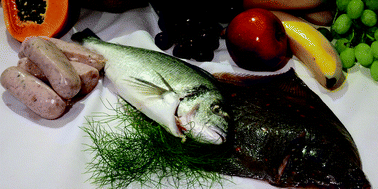It is often necessary to verify the quantity of high value flesh ingredients (meat and fish) in compound foods by analysis of the end product. The approach that has stood the test of time in this regard is that originally demonstrated by Stubbs and More who were working in the Laboratory of the Government Chemist (LGC). The method is based on the determination of the nitrogen content of a sample and its comparison, corrected for non-flesh nitrogen, with the species specific nitrogen concentration, the ‘Nitrogen Factor’. The available validated data for the nitrogen factors of meat, poultry and fish are reviewed from the first data, that of Stubbs and More published in the Analyst (1919), to date. In the main the only validated datasets for this important area of trade and enforcement are those of the Analytical Methods Committee of the Royal Society of Chemistry and the Association of Public Analysts, with input from LGC and trade laboratories. Recommendations are made for cost effective approaches to continue the generation of these datasets in the future.

You have access to this article
 Please wait while we load your content...
Something went wrong. Try again?
Please wait while we load your content...
Something went wrong. Try again?


 Please wait while we load your content...
Please wait while we load your content...